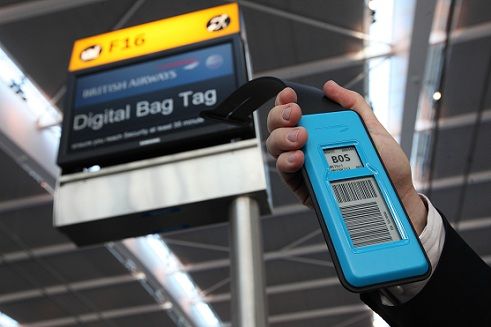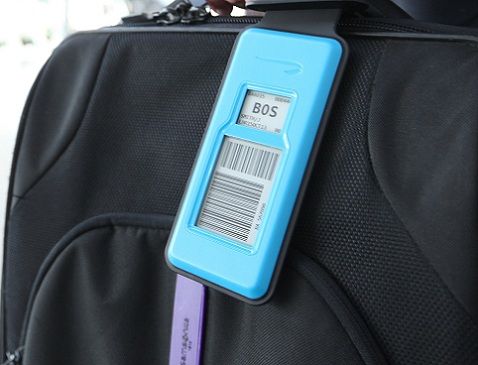British Airways is testing new electronic baggage tags that will save time at the airport, like you can via a mobile boarding pass, without the need for waiting in lines to get help from people even when checking a bag.
The initial test is being done this month on London Heathrow – Seattle flights with Microsoft employees. Unsurprisingly, they’re using Windows phones for this test but they’ll support other platforms going forward.
Participants will use a specially adapted version of the British Airways app that will automatically update the bag tag with a unique barcode containing new flight details and an easy-to-see view of their bag’s destination – just by holding the phone over the barcode.
You get a digital bag tag which you affix to your bag, and place your phone up to the tag after checkin to give the tag updated details.


My first reaction was that this was similar to something Qantas already has, the “Q Bag Tag” (I’ve not used it, but I do have a couple, swag from the oneworld MegaDO at the beginning of 2012).
Qantas “Q Bag Tags” and the new British Airways tags are different. The Qantas tag is RFID-based, so it works at airports where RFID readers are installed to process into the baggage handling systems. That’s why use of these tags is primarily limited to Australian domestic airports.
BA is using digital ink that replicates current paper tags, so there’s no additional airport infrastructure needed to roll them out. (I understand that IATA has future standards for RFID so I would expect the Qantas model to grow even as BA rolls out their print-your-own tag feature).
- You can join the 30,000+ people who see these deals and analysis every day — sign up to receive posts by email (just one e-mail per day) or subscribe to the RSS feed. It’s free. You can also follow me on Twitter for the latest deals. Don’t miss out!


Interesting feature. I would have thought that something like this would have included an RFID chip or similar so that if the bar code isn’t readable (bag sitting upside down or whatever), that it could still be scanned and routed. Certainly saves a lot of paper. Wonder if there’s going to be a charge to the traveler to use it…
I’m guessing based on the fact that “you hold the phone up to the tag”, mixed with the fact that it is testing with Microsoft employees (who most likely don’t use iPhones), that this uses NFC.
@Easy Victor – These tags won’t pay for themselves, so one way or another the costs will be passed to the consumer.